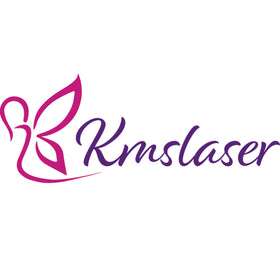If you're a brand owner, distributor, beauty salon, or spa/clinic looking to improve the effectiveness of your shockwave techniques and treatments, then this post is for you! Shockwave therapy—a high-frequency sound wave technology designed to break up tissue adhesion and scar tissue—has been used for many years in physical therapy practices around the world. As knowledge of its usefulness has grown, more professionals are taking advantage of shockwave technologies such as Radial Pressure Wave (RPW) to offer enhanced treatments to clients. Through this blog article we will discuss some key points on how often should one do shockwave treatment sessions and also address other essential information related with it.
What is Shockwave Therapy and How Does It Work
Shockwave therapy is a non - invasive medical treatment that has garnered attention in recent years for its impressive healing capabilities. The treatment involves using high-energy soundwaves to stimulate the body's natural healing process. These soundwaves are applied directly to the affected area through a handheld device, and they promote the growth of new tissue, increase blood flow, and reduce inflammation. This treatment is a great option for many different conditions , such as chronic pain, plantar fasciitis, and tendinitis. Shockwave therapy is a specialized treatment that requires a trained professional to administer it safely. If you are considering this treatment option, it's important to consult with a medical professional to determine if it's right for you.
Benefits of Doing Shockwave Therapy
Shockwave therapy is a non-invasive and effective treatment for a variety of conditions. This type of therapy utilizes high-energy soundwaves to stimulate the body's natural healing processes. One significant benefit of shockwave therapy is its ability to reduce pain and inflammation in targeted areas. This makes it an excellent option for individuals suffering from chronic conditions such a s plantar fasciitis, tennis elbow, and shoulder tendinitis. Additionally, shockwave therapy promotes tissue regeneration and can accelerate the healing process in soft tissue injuries. With its ability to provide lasting relief and promote healing, it's no wonder that shockwave therapy is becoming a go-to treatment option for many.
How Often Should You Do Shockwave Therapy
Shockwave therapy is a non-invasive treatment often recommended for patients with chronic pain. It uses high - energy shockwaves to stimulate the healing process in damaged tissues. While the number of sessions needed depends on the patient's condition, most people see results after three to six treatments. However, the frequency of treatments can vary. Some patients may only require one session per week , while others may benefit more from two to three treatments per week. It's important to consult with your doctor to determine the proper frequency and duration of your shockwave therapy sessions.
Who Can Benefit from This Treatment
When it comes to identifying who can benefit from a particular treatment, it's essential to consider a patient's unique health needs and medical history. While some treatments may be beneficial for a broad range of individuals, others may only be recommended for patients with specific conditions. Healthcare professionals use their expertise to determine eligibility and ensure that patients receive the most appropriate and effective care possible. By carefully assessing each patient's situation, medical providers can devise treatment plans tailored to their needs, empowering them to achieve optimal health outcomes.
Short and Long Term Side Effects & Risks
As with any treatment or medication, it is important to understand both the short and long term side effects and risks. While each individual may respond differently to a treatment, it is crucial to gather as much information as possible before making a decision. Short term side effects may be minor and easily manageable, but long term risks can have serious implications for one's health. It is important to have a conversation with your healthcare provider about any concerns you have regarding potential side effects or risks before proceeding with treatment. By doing so, you can make an informed decision about your health and well-being.
Tips for Post-Treatment Recovery
Successful post - treatment recovery requires careful attention to a variety of factors. One of the most important tips is to stay in communication with your healthcare provide r. They can help manage any lingering symptoms or side effects, as well as monitor up-and-coming issues. Additionally, be sure to follow your provider’s guidance on medication and wound care, as well as any other recommendations they may have. Proper nutrition and hydration are also key to a healthy recovery, as is getting adequate rest. Above all, take things slowly and be patient with yourself. Recovery takes time, but with diligence and proper care, you can come back stronger than ever.
Shockwave therapy has been used by medical professionals for years as a safe and effective treatment option for various conditions. It works by passing high-intensity sound waves to the body that break down unhealthy tissue, increase blood flow, accelerate healing, reduce pain, and improve mobility in patients.This noninvasive treatment procedure offers numerous benefits with minimal side effects , especially when done in combination with other treatments such as physical therapy . Plus, there are several tips available to help patients get the most out of their treatment sessions and recover quickly. Since this type of therapy is only intended for certain medical conditions, it is important to consult your doctor before trying it out to make sure it is suitable for you and your particular situation.

